By Katherina Perlongo
(un)Known Territories is the title of the exhibition that, from May 29 to July 31, presented ceramic works by 32 finalists of the fifth edition of the Officine Saffi Award in the foundation’s new headquarters located in Via Niccolini 35a, in the middle of the vibrant Sarpi-Chinatown district of Milan. The exhibition and the associated prize, which is awarded every two years, fulfill two of the foundation’s most important objectives established by Laura Borghi in 2011: to promote a horizontal dialogue between the forms and languages of contemporary art, design and craftsmanship and secondly, to create an international platform that places the artistic exploration of ceramic art at the heart of its activities.
A jury of experts made a high-quality selection of over thirty artworks – out of 900 applications from artists from all over the world. They were presented in the foundation’s light-flooded exhibition space, whose steel and glass roof is reminiscent of its former use as a glass workshop and offers an atmospheric setting in which the artworks have enough space to develop individually and, at the same time, enter into a thrilling dialog with the architecture and with each other. Artists working with ceramics were invited to reflect on the concept of territory. The selected works deal with the broad definition of this term, as territory can refer to matter, sedimented and in constant transformation, like the material clay itself, which forms the basis of all the artworks. However, territory can also be understood as a place of discovery, a subject and object of knowledge in the making, or as a narrative device that connects personal and collective histories, places and cultures. The works resulting from the exploration of this concept are as diverse as the meaning of the term and show how differently the material clay can be understood.
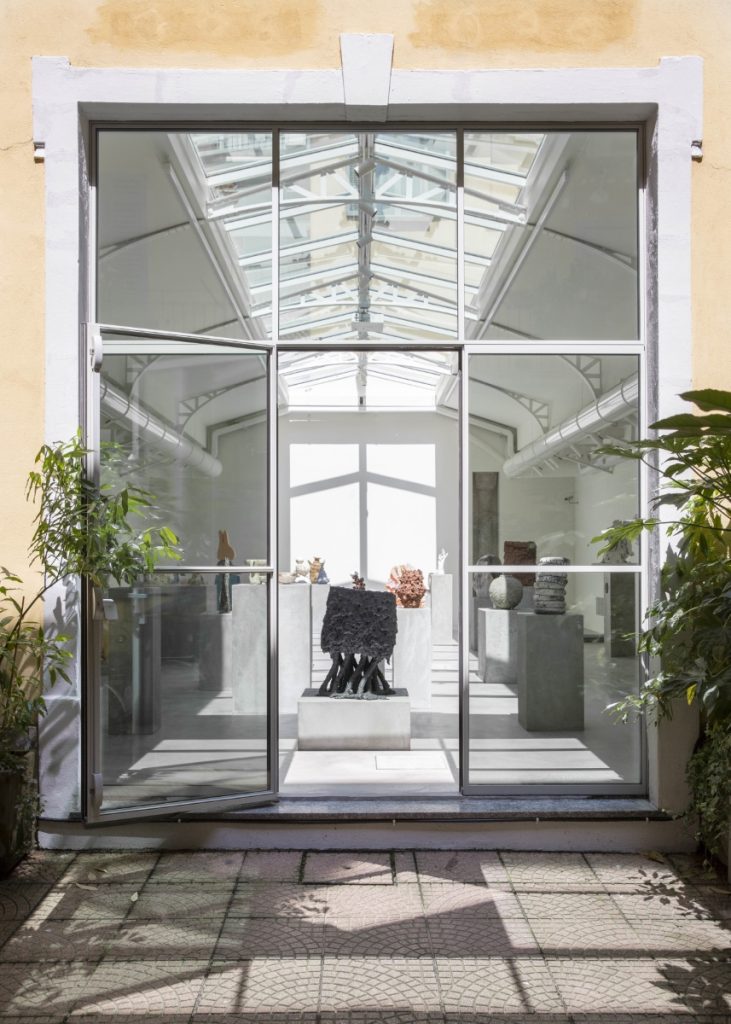
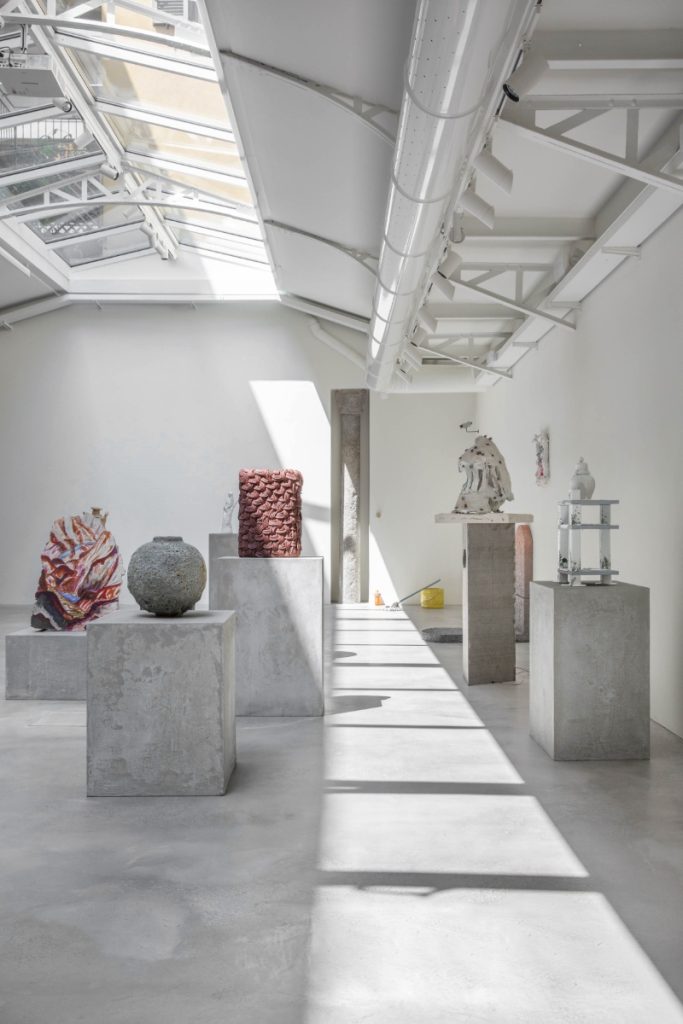
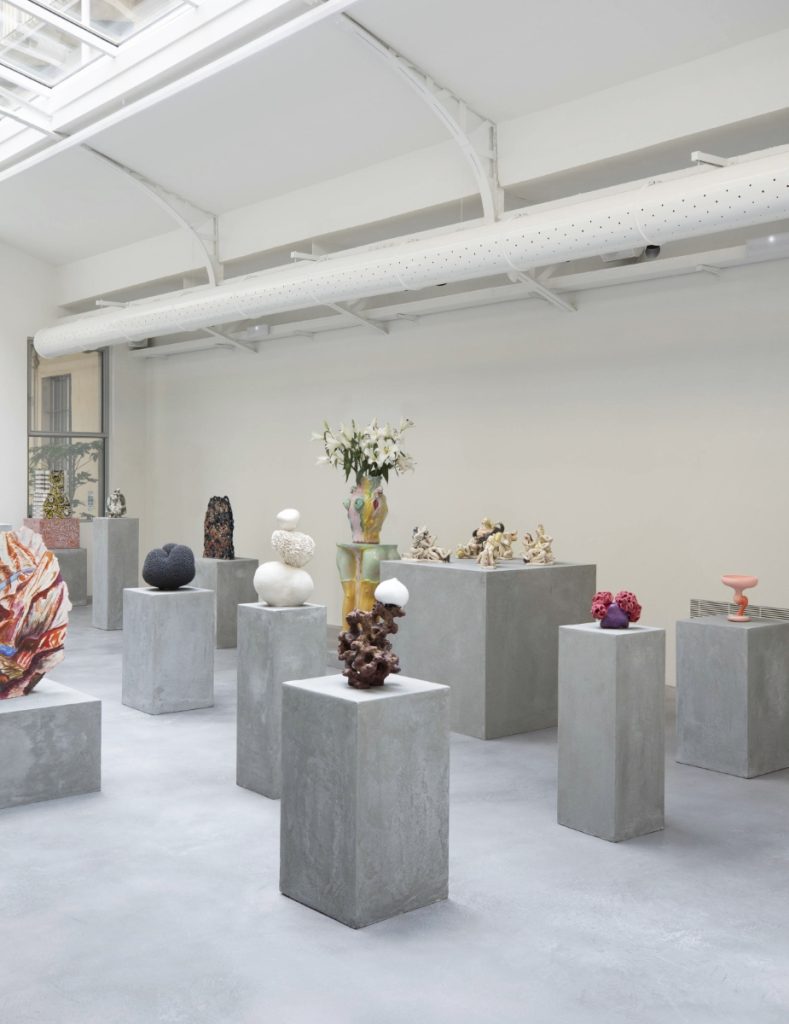
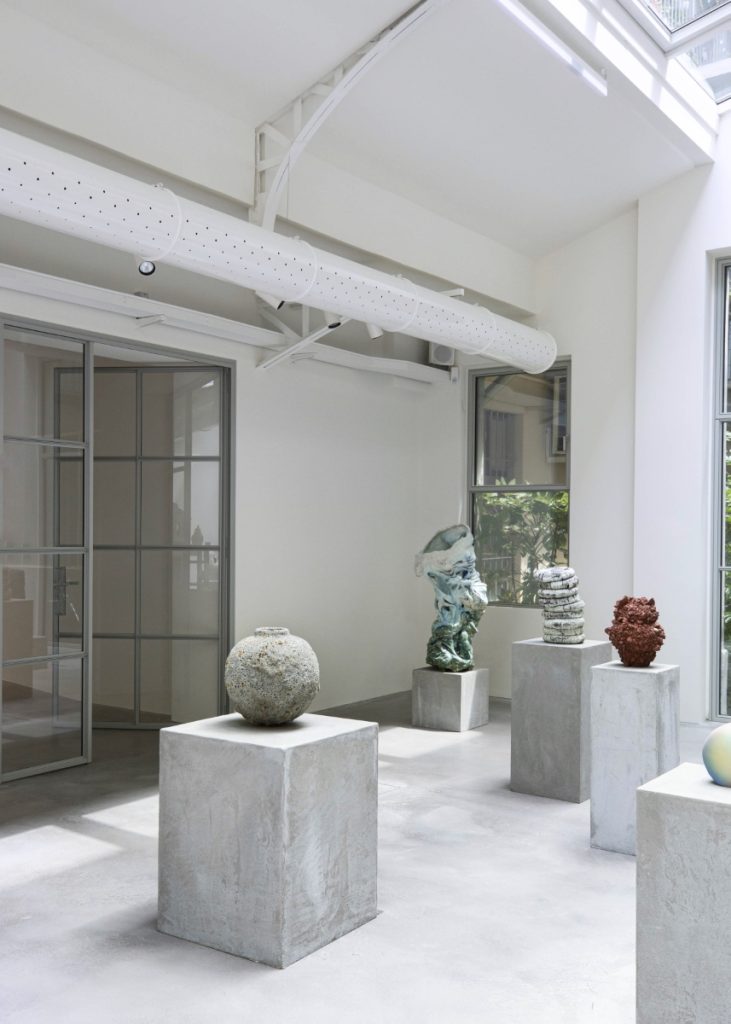
Some of the works are deeply rooted in the centuries-old tradition of pottery making, such as Traces of the Past (2023) by Danish artist Dorete Bendixen. She created a vessel in the form of a Moon jar with a surface that, thanks to the use of lava, black sand, and being fired in a wood kiln, reminds of archaic material: memories of a distant past. While On a Rock (2022) by Japanese artist Ion Fukazawa plays with supposed opposites: A white wheel-throwed porcelain vessel with its clear surface perched on an organic stoneware handbuilded construction reminiscent of a branch or root system. As is often the case in Fukazawa’s works, the focus here is on the differences between the artificial and the natural and the human struggle to find their identity within a world between these two poles. Traces of the artist’s approach and technique can be found in Kogei, Japanese traditional arts and crafts, with which the young artist has been involved since completing his design studies. Fukazawa has long been a rising star in the Japanese pottery scene and deserves a special mention.
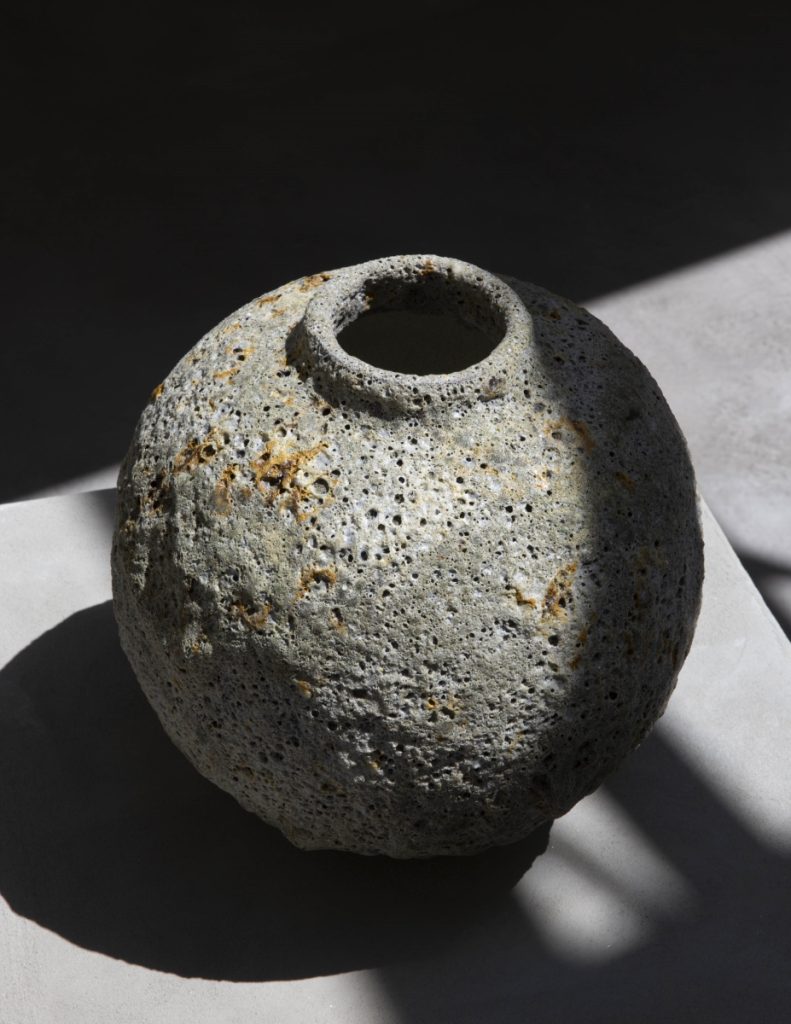
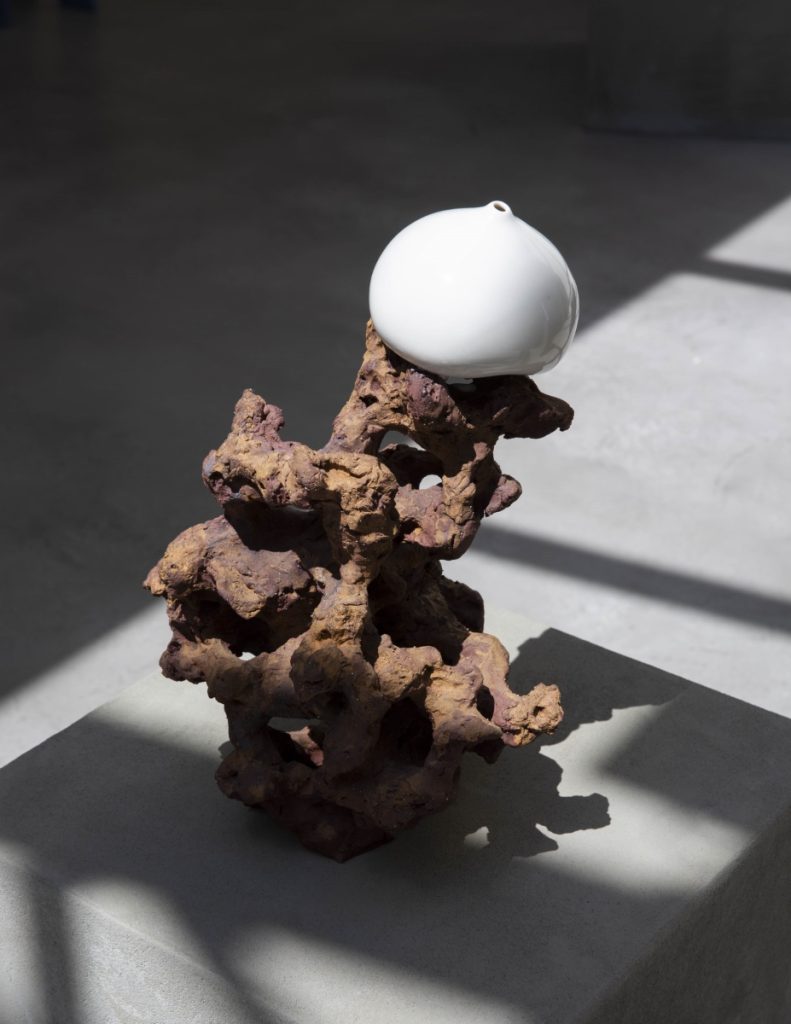
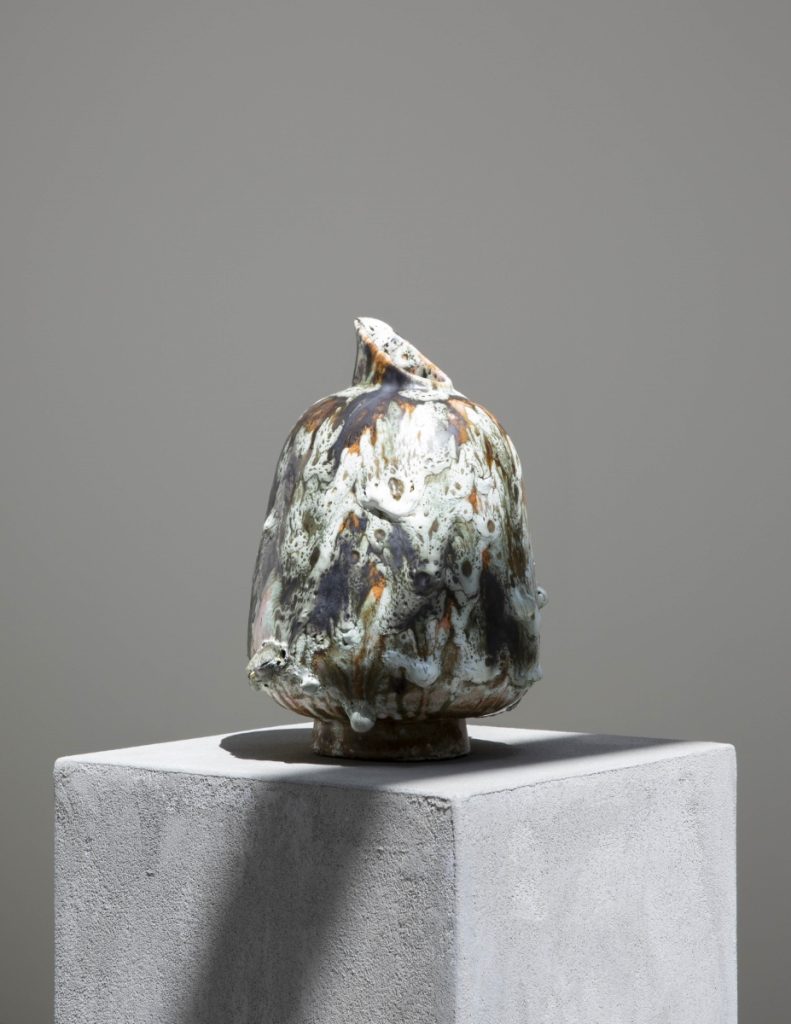
A more experimental approach can be found in the work of Norwegian artist Bjørgan Heidi. She refers to the learned tradition of the potter by breaking the rules and “deleting” all traces of acquired professional skills. Her work in the exhibition Pitcher (2023) is characterized by a play of colors and textures in the glaze. The vessel was glazed four times, giving it a pasty surface. It looks like the object has melted and imploded in the kiln due to errors in the firing process. But that is precisely what the artist is all about – always challenging conventional ideas of perfection. A similar conceptual approach, in part also very playful, can be found in many works of the six Dutch artists featured in Focus, a special section of the prize dedicated to exploring the panorama of ceramic creativity in a specific geographical and cultural context. Geertje Jacobs, curator of the section and director of the European Ceramic Work Centre (EKWC), invited the artists Funda Baysal, Koos Buster, Willem van Hooff, Koen Taselaar, Kim Wawer, and Floris Wubben to take part.
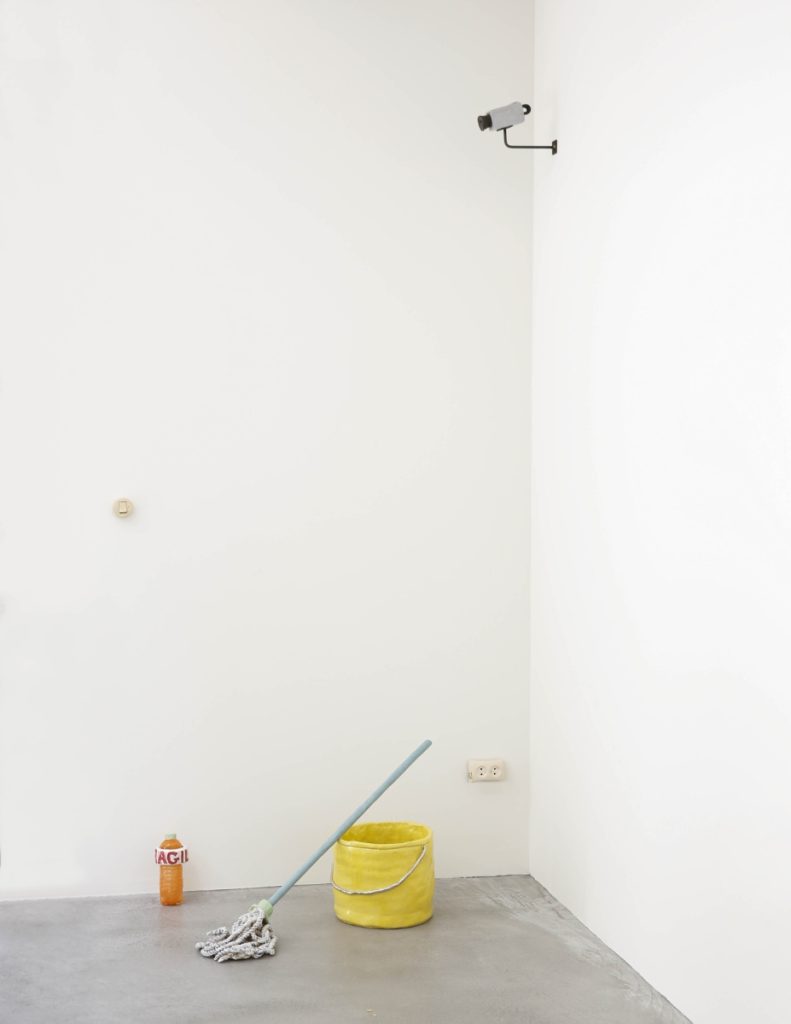
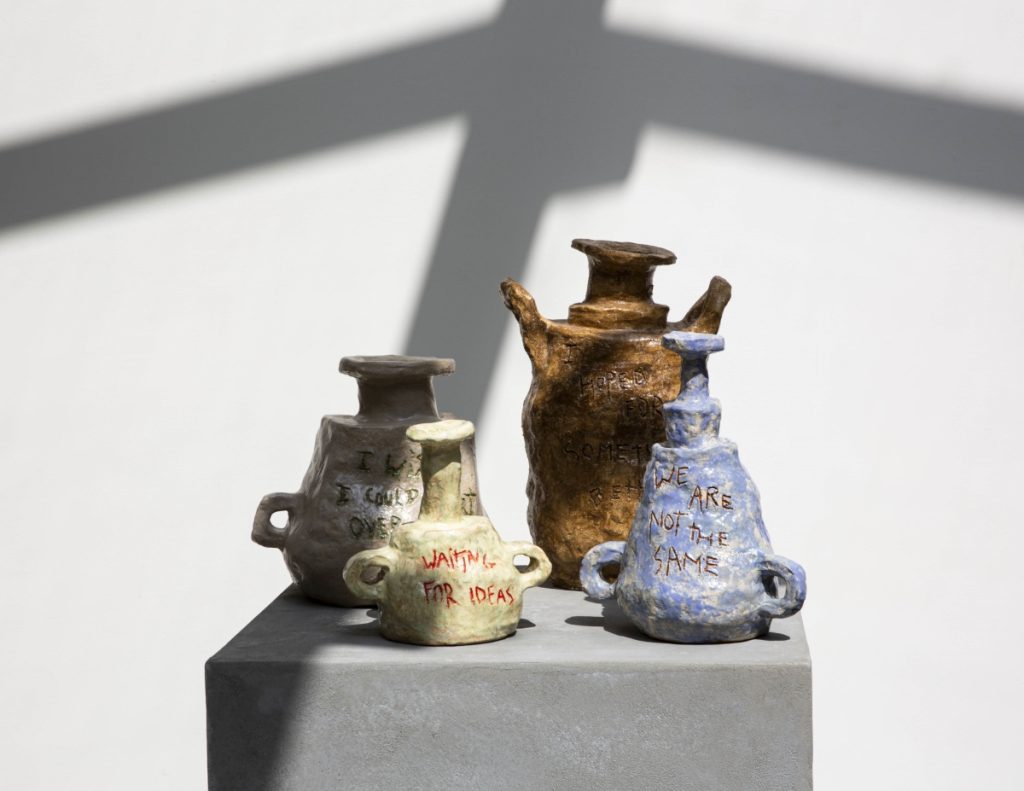
According to Geertje Jacobs, ceramic art takes a prominent place in the visual arts in the Netherlands. This becomes clear in the work of Koos Buster Ik ruik niks (2023), which is to be translated as “I don’t smell anything”. In the back corner of the gallery, a mop leans on a squeezy yellow bucket next to which stands a plastic bottle in garish orange. This is not the first time the artist has captured everyday objects life-size into clay. It is the inconspicuous objects of everyday life that interest the artist, and he stages them with a sense of humor. A similarly playful approach can be found in What’s Good (2023), Willem van Hooff’s piece consisting of four vases. Sentences like “Waiting for ideas” or “I wish I could start over again” are carved into the objects. This is a humorous examination of one’s own role as an artist, the constant struggle and search for new ideas and the fear of failure. His works appear to have been created by a child’s hand, are not concerned with the art-historical norms of beauty and proportion, and, with their cheeky slogans and references to ceramics as a transmitter of messages, are one of the highlights of the exhibition. In addition to numerous works that still adhere to the form of traditional ceramic vessels, some artists move far away from this and use the material clay to create figurative sculptures with narrative potential.
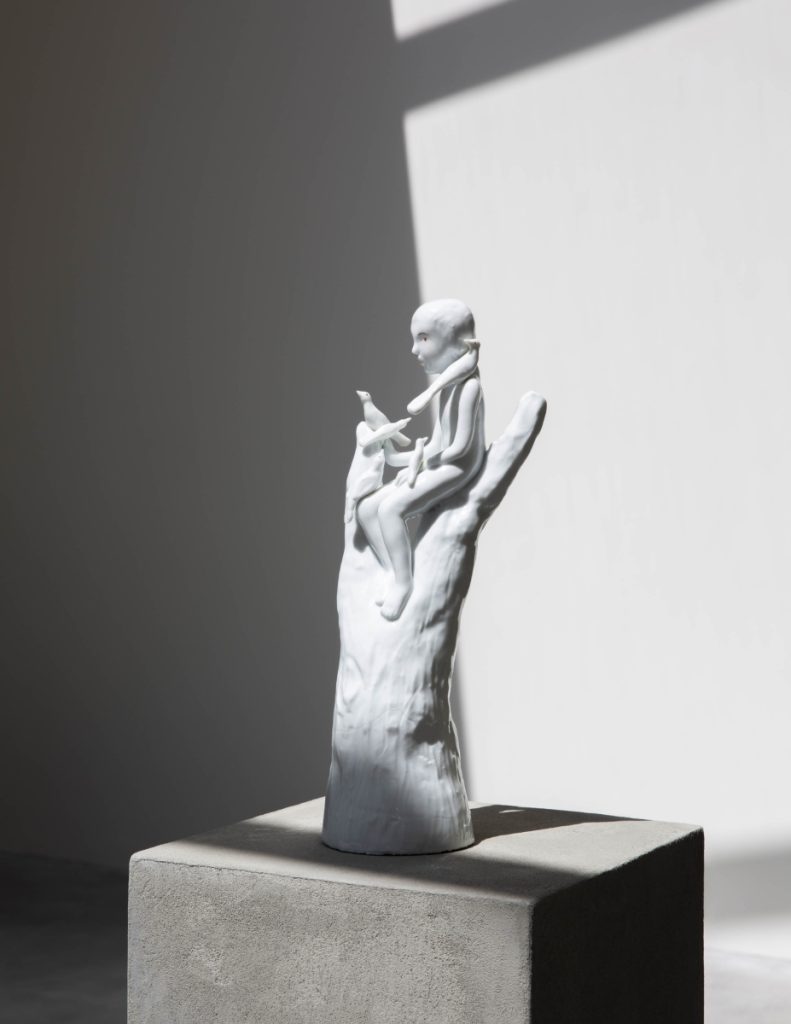
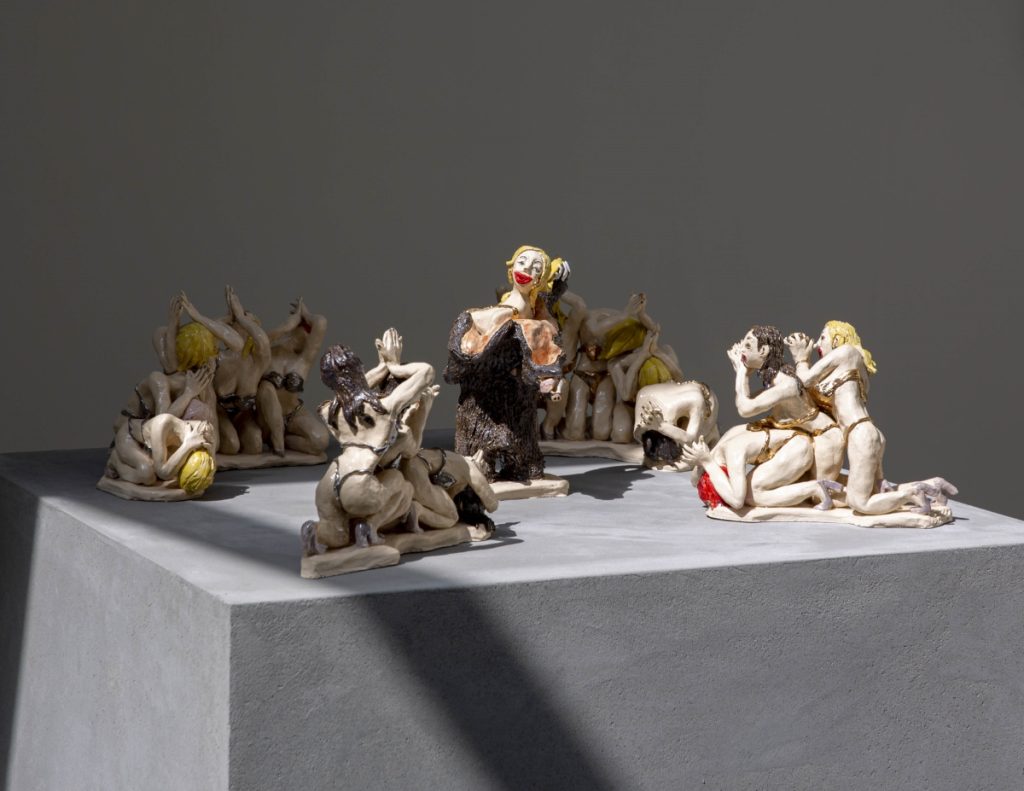
Such is the work Aves (2023) by Carolina Raquel Antich, which shows a young human figure sitting on a tree stump, surrendered by birds resting on her shoulder, her lap, and the branches of a tree. The artist is particularly known for her paintings. For the exhibition she created a poetic translation of her graceful images in a sculpture in white porcelain. A somewhat different mood was depicted by artist Ioana Maria Sisea’s work. Elena Udrea, Shaman Goddess of Romanian Politics (2023) shows groups of women dressed in underwear circling around a central female figure. The scene is sexually charged. Siesa’s works revolve around the concept of “desire” and reproduce three-dimensional expressions of hedonism, which the artist receives from the media.
Meanwhile, the deserving winner of the main prize is the Peruvian artist Javier Bravo de Rueda whose work Animita: set design for an apu (2022) will become part of the foundation’s collection. In the words of the jury, de Rueda’s work “reveals an extraordinary ability to capture the potential of ceramics through an unprecedented use of terracotta, conceived simultaneously as an architectural device, pictorial surface and sculpture.” Through the use of varied forms such as allegory, myth, and personification, Javier Bravo de Rueda’s work develops into a personal and subjective cosmology. His research analyses phenomena such as cultural syncretism, material and immaterial accumulation, the relationship between myth and ritual, and the boundaries between art and craft. The award-winning work is partly a three-dimensional ceramic sculpture but also seeks proximity to painting through its flat painted surface. This makes it an excellent work to underline the aim that Officine Saffi has pursued from the very beginning, namely to celebrate ceramics as a material that does not belong solely to the world of craftsmanship but has long since become part of the fine arts world.
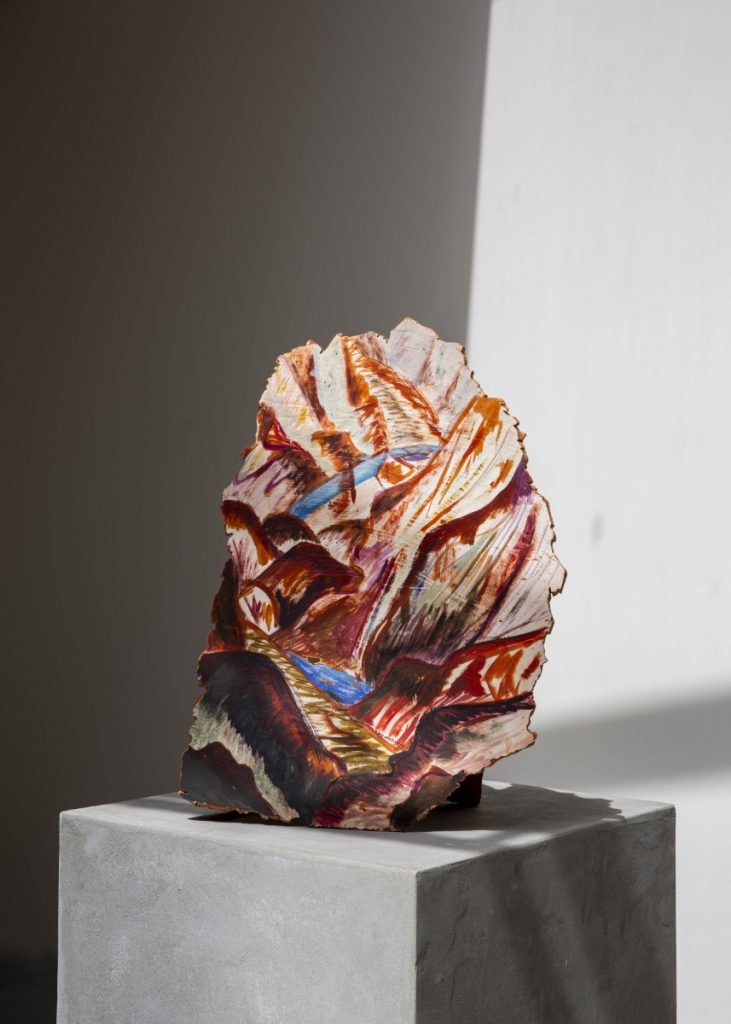
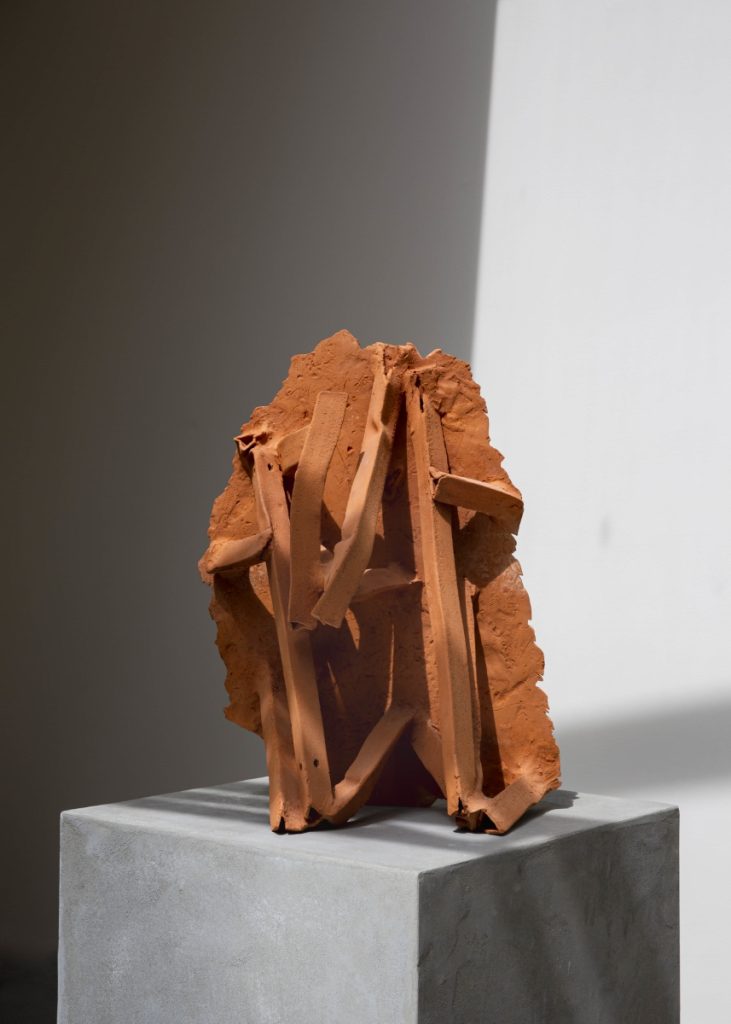
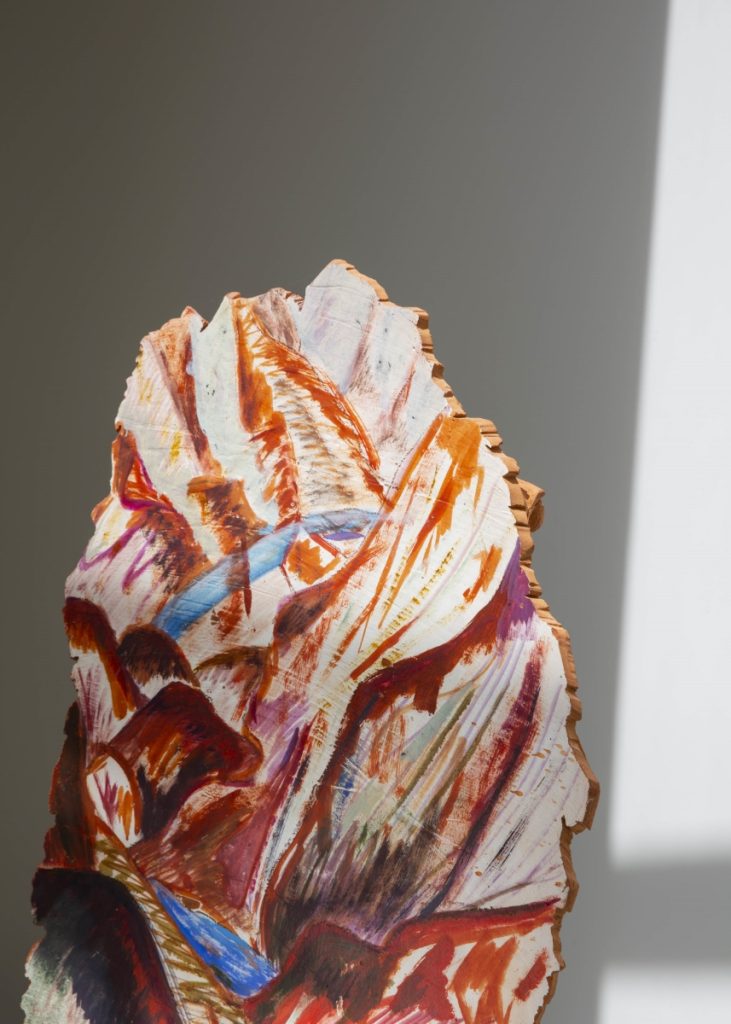
The exhibition featured works by Carolina Raquel Antich (1970, Argentina), Andres Anza (1991, Mexico), Dorete Bendixen (1966, Denmark), Burçak Bingöl (1976, Turkey), Heidi Bjørgan (1970, Norway), Javier Bravo de Rueda (1989, Peru), Kaiting Chan (1989, Taiwan), Tessa Eastman (1984, United Kingdom), Ion Fukazawa (1990, Japan), Hanna Heino (1983, Finland), Gitte Jungersen (1967, Denmark), Jihyun Kim (1997, Korea), Chryssa Kotoula (1995, Greece), Hanna Miadzvedzeva (1988, Belarus), Effe Minelli (1986, Italy), Irene Nordli (1967, Norway), Angel Oloshove (1981, USA), Héloïse Piraud (1988, France), Irina Razumovskaya (1990, Russia), Davide Ronco (1993, Italy), Ioana Maria Sisea (1988, Romania), Sissi (1977, Italy), Carl Richard Söderström (1960, Sweden), Zoe Williams (1983, United Kingdom), Bettina Willner-Browne (1969, Australia) and Bari Ziperstein (1978, USA).
Katherina Perlongo (*1989 in Bolzano, Italy, lives in Berlin) is Curator at the KINDL – Centre for Contemporary Art in Berlin and co-founder of the curatorial collective CUCO – curatorial concepts berlin. Most recently, she was Director ad Interim and Curator of Outreach at Georg Kolbe Museum. Currently, she is researching topics at the intersection of contemporary art, craft and design.
Ceramics Now is a reader-supported publication, and memberships enable us to publish high-quality content like this article. Become a member today and help us feature a wider range of voices, perspectives, and expertise in the ceramics community.
Captions
- Installation views of Officine Saffi Award 5 exhibition “(un)Known Territories” at Fondazione Officine Saffi, from 29th May to 31st July, 2024. Photos by Alessandra Vinci, courtesy Fondazione Officine Saffi
- Dorete Bendixen, Traces of the Past, 2023, Stoneware, black sand, lava. Courtesy Fondazione Officine Saffi. Photo by Alessandra Vinci
- Ion Fukazawa, On a Rock, 2022, Porcelain, stoneware, handbuilding and wheel throwing. Awarded the Young Artists Prize by Four Arts. Courtesy Fondazione Officine Saffi. Photo by Alessandra Vinci
- Heidi Bjørgan, Pitcher, 2023, Slipcast stoneware, glazed four times.Courtesy Fondazione Officine Saffi. Photo by Alessandra Vinci
- Koos Buster, Ik ruik niks, 2023, Ceramics, glass.Courtesy Fondazione Officine Saffi. Photo by Alessandra Vinci
- Willem Van Hooff, Whats Good, 2023, Glazed earthenware.Courtesy Fondazione Officine Saffi. Photo by Alessandra Vinci
- Carolina Raquel Antich, Aves, 2023, Hand-made porcelain.Courtesy Fondazione Officine Saffi. Photo by Alessandra Vinci
- Ioana Maria Sisea, Elena Udrea, Shaman Goddess of Romanian Politics, 2023, Stoneware, glaze, lustre.Courtesy Fondazione Officine Saffi. Photo by Alessandra Vinci
- Javier Bravo de Rueda, Animita: set design for an apu, 2022, Terracotta, engobes, oxides, oil paint.Awarded with the Main Prize. Courtesy Fondazione Officine Saffi. Photo by Alessandra Vinci


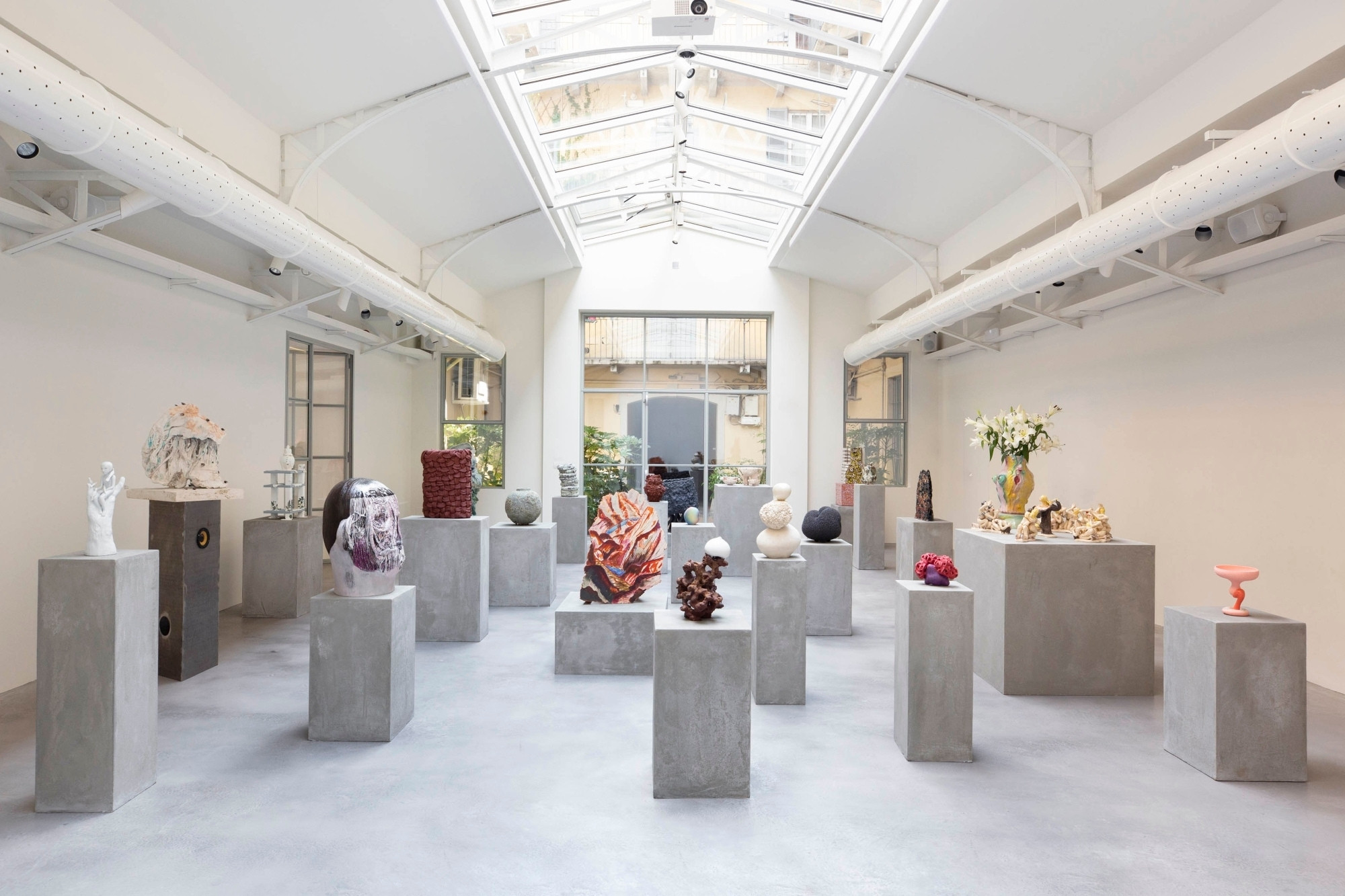















Comments 1